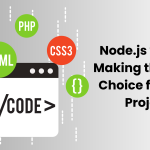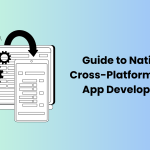Have you ever wondered how to make your mark in a sea of countless web applications? The best strategy is to compete with others in terms of scalability and versatility. A web app, if developed using the right tech stack, will be adaptable to ensure future growth and market expansion requirements.
It means the choice of your development stack is the most crucial decision ever in kickstarting your project. Web developers need a well-established technology to embark on the journey of web application development. React Native is a widely used and versatile platform that seamlessly supports cross-platform app development across web and mobile platforms.
In this article, we’ll walk you through the essentials of React Native for Web and how we can leverage its potential to maximize efficiency. So, let’s dive into it.
Understanding React Native for Web
React Native for Web serves as a bridge connecting the React Native framework with React DOM. It is generally used for enhancing current React Native apps, creating webq-exclusive applications, developing new apps, and building cross-platform solutions. This intermediary platform facilitates the scaling of JS code for web applications. Through React Native Web, skilled developers can utilize React Native components and custom UI APIs such as View and Text within web applications.
The developers having sound technical knowledge about the React Native framework and React DOM can help you with cutting-edge React Native web apps. There is no need to re-write code. Programmers can simply use existing JavaScript code and leverage React DOM components to provide native experiences to your web apps.
React Native’s greatest feature is that it can now be used to build reliable apps that work natively on iOS, Android, and any web browser. Standard UI APIs like View and Text are used by React Native. Therefore, by using React, many gaps are filled by React Native for Web. It is specifically made to facilitate the creation of cross-platform mobile and web applications using a single code base.

React Native Can Be Used for Web & Mobile – Myth or Reality?
Yes! React Native can be used for web and mobile app development. React Native was originally developed for building mobile applications using JavaScript and React. Moreover, React Native is used to develop feature-rich iOS and Android apps with a single codebase. Now the question arises: What’s React Native for the Web used for? React Native for web further extends its features by enabling developers to create web apps using the shared codebases and the React Native components (originally used for iOS and Android platforms). That’s a huge success on part of React Native.
React Native is a project designed to enable React Native components and APIs to work seamlessly with web applications. By allowing developers to write their applications once in React Native and deploy them on the web, iOS, and Android platforms, it facilitates a unified cross-platform development experience. This strategy not only simplifies the development workflow but also guarantees a consistent user experience across various devices and platforms.
Pros of Using React Native for Web
As we explained earlier in the article, React Native adds up a feather in the cap by moving beyond mobile app development. It can now be used to develop web applications with the help of the same codebase, APIs and React Native components. Building web applications with React Native’s shared codebase is a practice we call “React Native for Web”.
Here’re some of the notable benefits of using React native for the web. Jump ahead!
- React Native is just as capable on the web as it is on desktop. With the help of tools like accessibilityLabel and accessibilityRole, programmers can create apps that are more accessible.
- React Native offers the capability to develop the code that runs natively on iOS, Android as well as web browsers.
- React Native carries out web-specific program execution that is platform-aware. Since it is not always possible to rely on APIs, platform identification is crucial. It is useful when you wish to run compatible codes that are required for the current platform only.
- It uses AppRegistry to support server rendering. You can also use hard-coding the HTML document string to render the application.
- React Native support third-party app integrations such as Google maps to enhance the functionality of the app.
- Expo Web allows you to start a single Expo project and launch it on the web, iOS, Android, and desktop.
- Expo Web supports Progressive Web Apps.
Significant Fundamentals of Building Apps with React Native for Web
1. Comprehensive Development Experience
Developers can streamline their workflow by utilizing the same codebase to create applications for both mobile and web platforms. This comprehensive development strategy not only saves time and resources but also guarantees a seamless user experience across different devices.
2. Modular Design Structure
React Native is built on a modular design structure, allowing developers to create self-contained components that handle their own state. By assembling these components together, developers can easily construct intricate user interfaces. This design philosophy enhances code reusability and facilitates the debugging and testing process.
3. Responsive Design
Responsiveness lies at the heart of app development due to the prevalent varying screen sizes and devices. React Native is designed to be a responsive framework since it builds web apps which automatically adapt their layouts and functionality as per various screen sizes and devices. Developers do not need to pay much heed to the functionality of their web apps across tablets, desktops, and mobile devices.
4. Multi-Platform Compatibility
It allows developers to use a single codebase for developing native apps for mobile and web platforms. Hence, enabling developers to seamlessly undergo the development process on one hand, and on the other hand, leveraging users to have a cohesive and seamless experience across platforms.

5. Robust Ecosystem & Community Assistance
The robust ecosystem and collaborative community of React Native offer numerous advantages. Developers can leverage a vast array of libraries, tools, and support to improve the functionality and aesthetics of their web applications. Additionally, the dedicated community provides a wealth of resources for troubleshooting and creative solutions, assisting developers throughout their development process.
Final Thoughts
React Native brings multifold benefits to the table and is becoming popular due to its significant features. It enables developers to use React Native components and APIs and write a single codebase that works for iOS, Android and web platforms. Seems impossible? Nay! It’s the “React Native for Web” here! And you ought to believe it.
Take your React Native Web apps to the next level with our skillful team of developers. Stackup Solutions offers scalable, secure and cutting-edge app development and design services to kickstart your journey. So what are you waiting for? Hit us up & get started!
FAQs
1. Why should we use React Native for Web?
React Native is an exceptional technology for cross-platform web app development. It enables developers to employ a single codebase for Android, iOS and web platforms. It eliminates the need to rewrite code for multiple platforms by delivering consistent user experience. Thus, leveraging React Native saves your time, resources, and money.
2. Can I use React Native for both web and mobile platforms?
Definitely! Developers may create a single React Native application that runs natively on Android, iOS, and a web browser utilizing common web technologies by using React Native.






